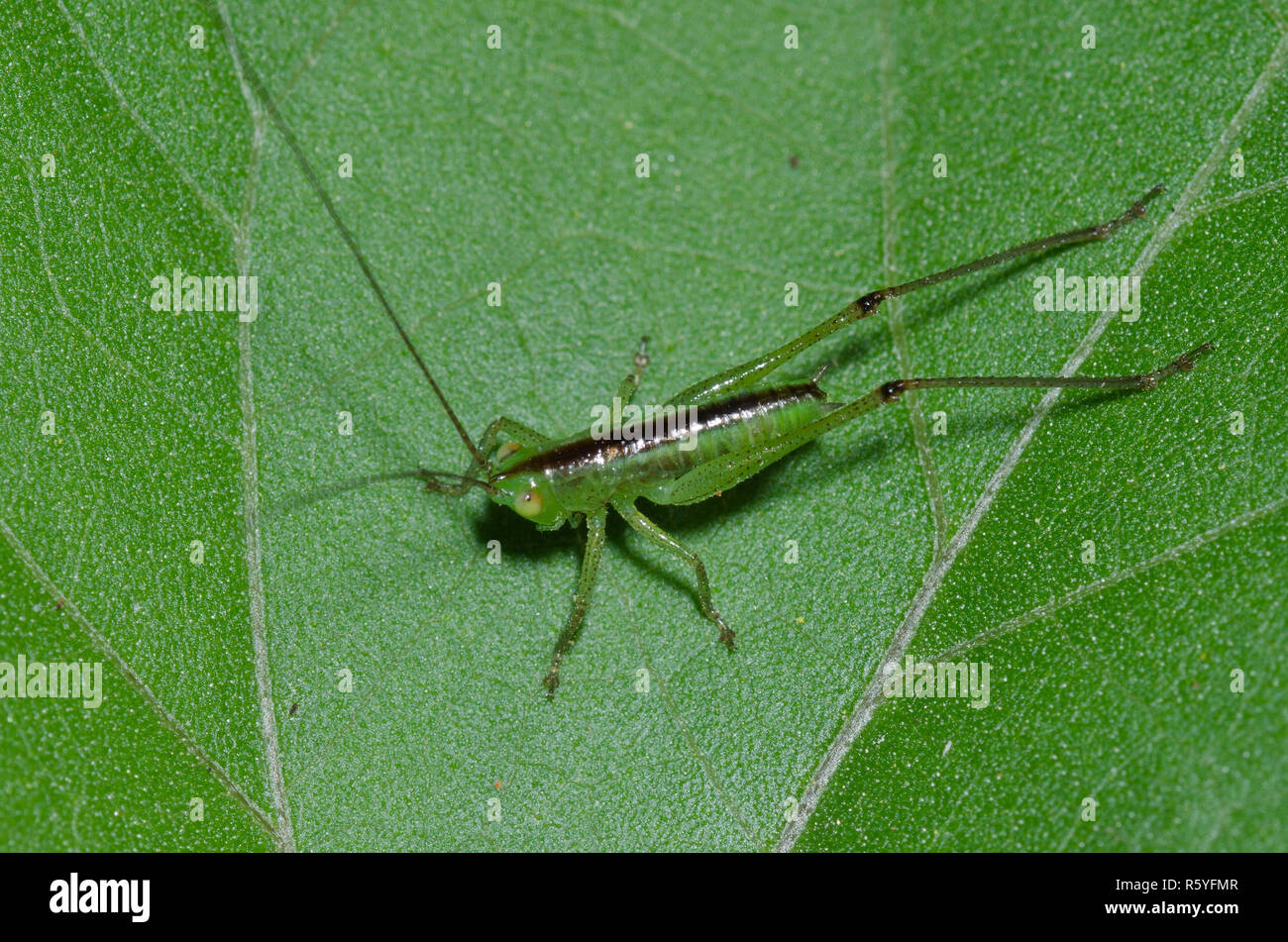Lesser Meadow Katydid Nymph | Slide Mouse

This nymph of a lesser angle winged katydid has an unusually red pink coloration.
Lesser meadow katydid nymph. A juvenile meadow katydid perched on a stalk of wild grass. Recognized by its bright green body yellow orange rear and a dark brown band that runs from the top of its head back to its wings. This appearance all changes as they mature. One generation per year.
Black legged meadow katydid orchelimum nigripes. The eggs are flat almost like small pumpkin seeds and they may might not all be the same color. These katydid s are quite common in the eastern us states from maine to east texas. According to bugguide there are 18 species that are rather similar looking and females oviposit in grass stems.
R983w2 rf meadow katydid tribe conocephalini nymph on blue eyed grass sisyrinchium sp. They have vivid colors and dark spots or speckles on them. While this katydid is in the family of lesser meadow katydids one of it s most notable features are it s ridiculously long antennae. Nymphs juveniles look more like crickets or grasshoppers.
They have a body taller than it is wide and thin and hind legs that are longer than the other pairs of legs. The lesser meadow katydid has a slender body and wings that don t extend past their abdomen. Lesser angle winged katydid microcentrum retinerve subfamily phaneropterinae family tettigoniidae. Those wings are particularly useful for attracting mates when it comes time to chirp.
Lesser meadow katydids are smaller than others and they have a cone shaped head that is a bright green color without markings. Lesser meadow katydid male nymph. A brown stripe runs down the back. As it matures it also grows a very long ovipositor and eventually wings nearly twice as long as it s body.
They also have a straight ovipositor for laying eggs. They are found in eastern and central north america and lives in fields and meadows. Katydids lay their eggs on twigs in a single row one slightly overlapping the egg before it. Katydids are usually green and camouflaged to blend in with foliage more commonly heard than seen.
Long legs are speckled with tiny brown spikes. Females have straight syringe like ovipositors that they use to inject fertilized eggs into plant stems. Fork tailed bush katydid. They feed on leaves flowers seed and the pollen of grasses.


















